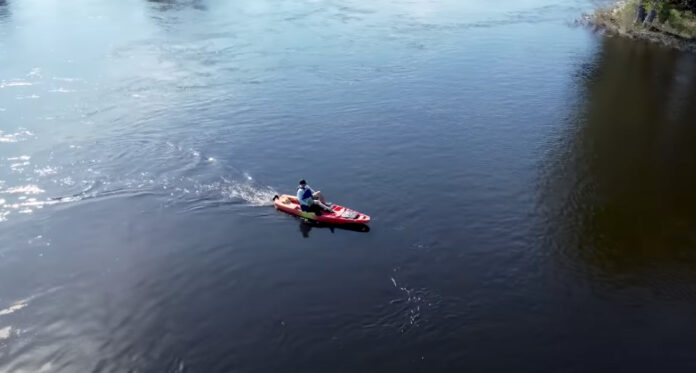As I continue my mission to get more people into the great outdoors, it's necessary to talk about managing pain while paddling. Whether you are dealing with an injury, or simply the realities of Father Time (often a mix of both), many current and would-be paddlers have to navigate these physical barriers.
Things like back pain, shoulder pain, and of course, butt pain are common deterrents – but they don't have to be! Let's walk through these problematic areas and find solutions that will hopefully renew your enthusiasm for the sport. Hopefully, you can learn how to kayak without back pain or shoulder pain.
Is it hard to carry a kayak?
Most hard-shell kayaks are between 10 – 17 feet in length, and typically range from 40 – 70 pounds (though sit-on-top fishing kayaks can be upwards of 150 pounds!). Depending on the model and your physical capabilities, carrying a kayak from your garage to your vehicle, and then from the parking lot to the shore, can be a strenuous and awkward task.
Kayak carts help carry the load
The first way to alleviate this chore is to get a portable kayak. Inflatable or foldable boats are significantly lighter than their hard-shell counterparts. Although, some people may still find the backpack/carry case a little tricky to lug around. Recruiting an extra set of hands can certainly go a long way in any situation.
Kayak cart drawbacks
One drawback to keep in mind with portable kayaks is that while one chore is largely eliminated , a new one emerges: setting up/packing up. If you prefer hard-shells, then another option to consider is investing in a kayak cart.
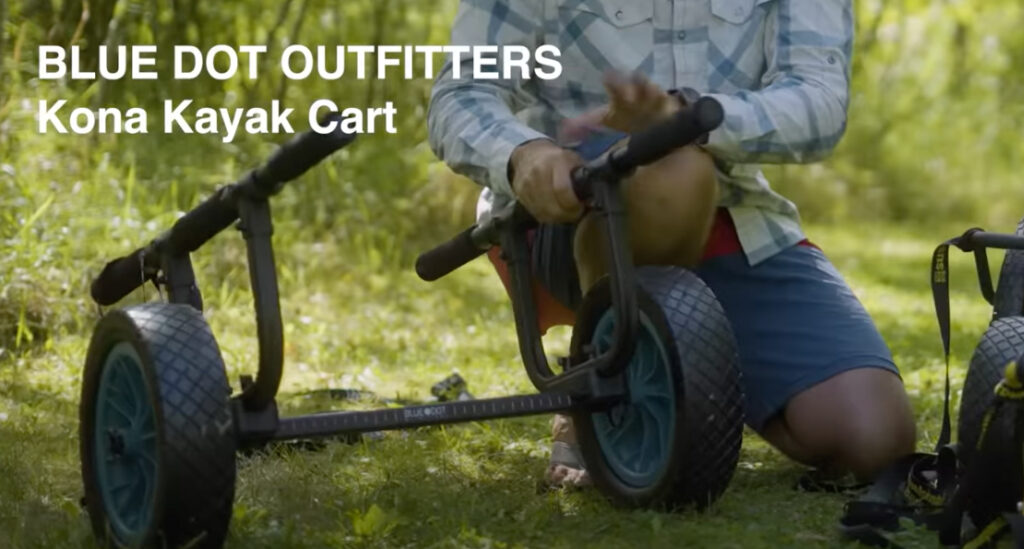
Kayak carts reduce discomfort
Kayak carts are a great way to reduce the discomfort associated with transporting a heavy kayak to and from the water. I'm honestly surprised how few people know about them, and how long it took me to incorporate them into my routine. The trick is to get a quality cart, and one that is suitable for your type of kayak.

A cheap or mismatched cart can cause as much of a headache (or backache) as just carrying the kayak in the first place. In my recent PaddleTV video, I showcased a few styles of carts by Suspenz and Blue Dot Outfitters that are tailored to different weights and shapes of kayaks. Check out their websites for more direction regarding which model is best-suited for your kayak.
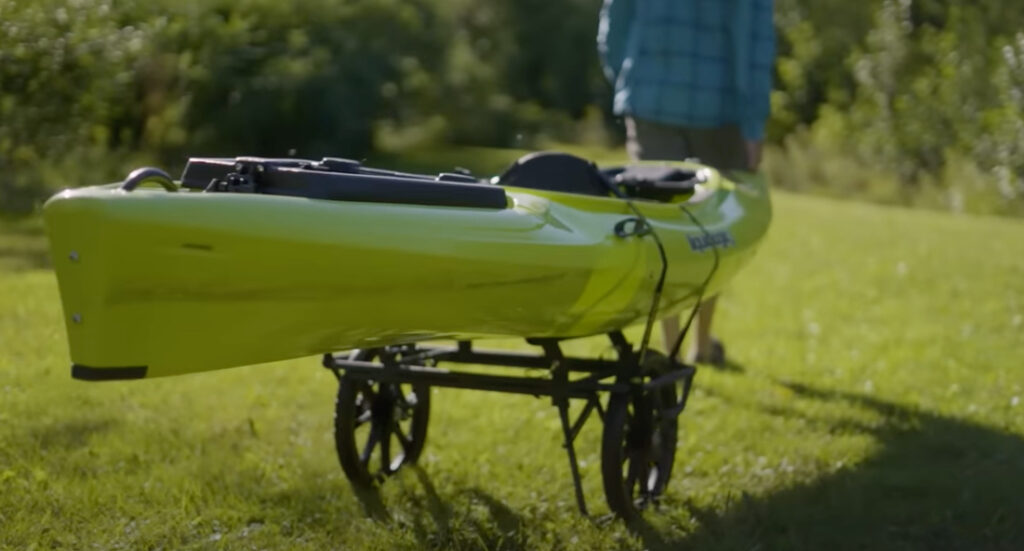
How do you get in and out of a kayak?
Even for younger and agile paddlers, getting into and out of a kayak can be a bit of a challenge. So for anyone dealing with acute or chronic pain, this can be a serious barrier to entry (literally!). Sit-on-top kayaks are much easier to get in and out of, or rather, on and off of. Taking the cockpit out of the equation removes the faux-yoga moves that can be a source of discomfort for many paddlers.

Also, the seat is naturally higher up in these boats. But better still if you choose a model with an optional high/low seat position. This way, you won't have to step down as far, or up as much, upon entry and exit. This can really save the knees and back some grief. As an added bonus, once you're settled in, a sit-on-top kayak gives a lot more room to stretch out in. So if you're struggling with getting in and out of your kayak, a sit-on-top style could be the way to go.
How can I kayak without hurting my back?
Lower back pain is another common malady for kayakers, particularly during longer paddles. There are a few ways to mitigate this. The first strategy is obvious, but always worth a reminder: stretch and strengthen the necessary areas. For starters, tight hamstrings are a frequent cause of low back pain.
When sitting in your kayak, if your butt is at the same height as your feet, then tight hamstrings will make it difficult to sit upright. Improving flexibility will help with this, but so too will sitting in an elevated position.
Once again, some higher-end kayaks offer framed-seats with high and low positions. Though it comes at a premium, this will be a welcomed feature for anyone struggling with general discomfort while sitting. Oftentimes, I see paddlers leaning back to compensate for the stressed position, but even with the help of a back support, this is awkward and unsustainable for a long session.
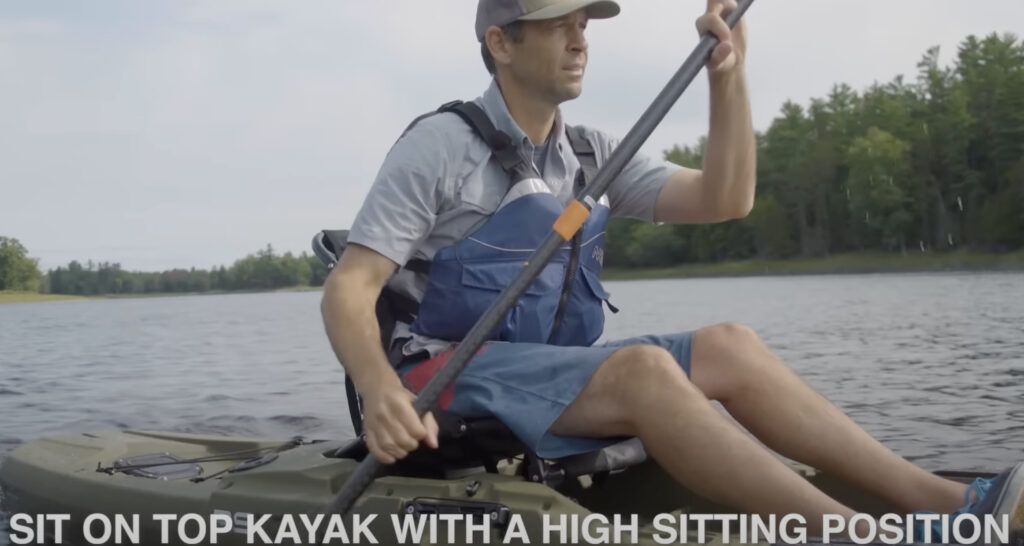
Another thing to look for in a kayak seat is good lumbar support. Usually, framed-seats with adjustable positions will also have solid low-back support. But you can also add inflatable supports, or get creative by stuffing extra padding between you and the seat. If you stretch out those hammies, elevate your butt above your heels, and keep your back supported, you should experience a lot less pain while paddling.
Why does kayaking hurt my shoulders?
Veteran paddlers sometimes experience shoulder pain as a result of the repetitive wear and tear. Other people may have suffered a separate injury, which kayaking then flares up for them. Whatever the case, shoulder pain can make the idea of paddling quite daunting.

Thankfully, over the past 5 to 10 years, pedal kayaks have exploded in popularity. This is primarily because of their benefits for anglers, but sufferers of shoulder pain will also love the hands-free movement. These days, there are so many sub-genres of pedal kayaks to choose from, albeit at a higher price tag. But if it reopens the door to the world of kayaking, then that $1,500 – $2,000 (USD) investment will be well worth it.
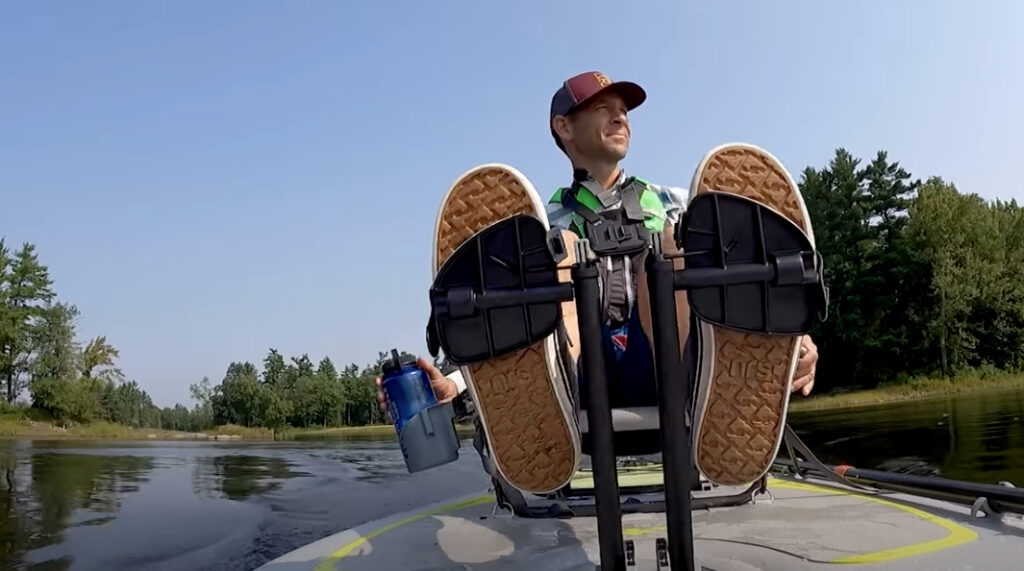
So if your mind is willing but your body protests, I hope these tips will bring you some relief. Aches and pain can be an annoyance, but they don't have to be a deal-breaker. The way I see it, there's no reason why most people can't keep paddling through injuries, or into their later years. The key is to identify the problem, adjust accordingly, and then keep at it! If you enjoyed this article and want to get more paddling tips, sift through some gear reviews, or just follow along with my latest adventures, be sure to check out PaddlingTV or subscribe to the In4Adventure newsletter.



